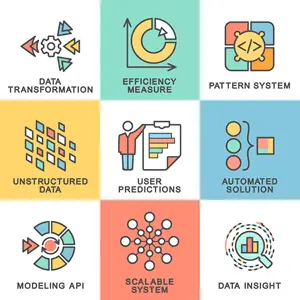What is Reinforcement Learning about?
In contrast to supervised learning where machines learn from examples that include the correct decision and unsupervised learning where machines discover patterns in the data, reinforcement learning allows machines to learn from partial, implicit and delayed feedback. This is particularly useful in sequential decision making tasks where a machine repeatedly interacts with the environment or users. Applications of reinforcement learning include robotic control, autonomous vehicles, game playing, conversational agents, assistive technologies, computational finance, operations research, etc..
Disclaimer!
This repository mainly contains my assignments for this Reinforcement Learning course, which was offered in Fall 2021 at UWaterloo by Professor Pascal Poupart. Because of the academic integrity, I don't have the permission to post this repository publicly online; therefore, this repository is only accessible upon explicit request to me as defined in this document.
Download From Github With Explanations [PRIVATE REPO, ONLY ACCESSIBLE BY EXPLICIT REQUEST]
Part 1
Summary:
-
Markov Decision Process [from scratch in Python]
- value iteration
- policy iteration
- modified policy iteration
- Maze problem to test above algorithms
- Compare the performance of each algorithm
- Q-Learning [from scratch in Python]
- Use matplotlib to compare the effect of the Q-Learning parameters on the cumulative discounted rewards per episode
-
deep Q-network to solve the CartPole problem from Open AI Gym
- Using Agents library from TensorFlow
- Use matplotlib to compare the effect of the deep Q-network parameters on the average cumulative discounted rewards [also averaged across several runs to reduce stochasity]
- More details: https://cs.uwaterloo.ca/~ppoupart/teaching/cs885-fall21/assignments.html assignment 1 section
Part 2
Summary:
-
Bandit algorithms from scratch in Python
- epsilon-greedy
- Thompson sampling
- UCB
- REINFORCE algorithm from scratch in Python
- model-based RL algorithm from scratch in Python
- Soft Q-Learning in Pytorch
- Soft Actor Critic in Pytorch
- Discussion over the properties of each algorithms and their effect over the performance
- More details: https://cs.uwaterloo.ca/~ppoupart/teaching/cs885-fall21/assignments.html assignment 2 section
Part 3
-
Partially Observable RL
-
Deep Recurrent Q learning (DRQN) algorithm in Pytorch
- Using LSTM and MLP
- Compare to Deep Q Network's performance
-
Deep Recurrent Q learning (DRQN) algorithm in Pytorch
-
Generative Adversarial Imitation Learning (GAIL) algorithm in Pytorch
- Using deterministic policy gradient update technique
- Compare to Behavior Cloning's (BC) performance
-
Categorical (C51) distributional RL algorithm
- Compare to DQN on the Cartpole domain with epsilon greedy exploration
- More details: https://cs.uwaterloo.ca/~ppoupart/teaching/cs885-fall21/assignments.html assignment 3 section
Download From Github With Explanations [PRIVATE REPO, ONLY ACCESSIBLE BY EXPLICIT REQUEST]



